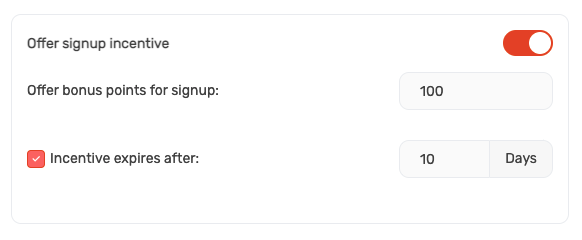
“To reward or not to reward… that is the question”
That is the Hamlet quote, right? 🤔
Perhaps my memory is failing me.
But nevertheless.
It’s an age-old question in the employee advocacy space.
Should you incentivise your employees to share your content?
To many, it’s a no brainer 🤷♂️
Because probably the second most common question we hear.
(this time from employees).
Is “well, what’s in it for me?”
Unless you have a thriving company culture.
There’s no denying that some employees will need that extra something to get them sharing.
Heck, even if you DO have a thriving company culture.
Not every employee will want to share on social media.
And that’s OK 👍
Employee advocacy/personal branding isn’t for everyone.
Even if you’ve done a webinar on social selling.
And effectively communicated the importance of personal branding.
And how employee advocacy can help with this.
Some people simply won’t be as invested as you’d like.
What’s more is that some people simply won’t have the time ⏱
They might be willing to take part and share more on social media.
But in reality, they’re swamped.
Maybe they DO want to share more.
But they simply can’t find the time.
They’ve got a million and one things on.
So, naturally.
Sharing content to social media isn’t a priority 🙅♂️
ESPECIALLY if building brand awareness isn’t part of their job role.
This will come naturally to your marketing, comms, and sales teams.
But if you have a product team full of developers…
Well, you get the jist.
It’s not always going to be their bag.

So, what’s to be done? 🤔
We would always say.
(before considering rewards)
That communicating the employee benefits is where you should start 👌
As mentioned though.
This won’t always do it.
Some people NEED that extra something.
But there’s no denying that the BEST kind of employee advocacy…
Is when you have employees sharing because they want to.
And because they know what’s in it for them 💪
(building their personal brands and establishing a reputation within their industry!)
Not only does it mean more shares.
But it also tends to look more authentic too.
Why?
An employee who wants to share will typically spend more time on their posts.
Giving everything a little more thought and taking extra care with each one ✨
Anyway, I digress
That’s not why we’re here, right?
We want to know if rewarding employees for sharing yields better results.
Well, as fate would have it.
We surveyed over 500 employees in a range of industries across the UK and the US.
To answer this question once and for all! 🙌
The aim was to understand their attitudes to social media.
And to get a better understanding of their behaviours when it comes to sharing work-related and employer content.
Were they sharing company content?
If not, would a little incentivization work?
See the results below 👇

78% of respondents said they’d be more likely to share if their company made it easier for them to source and share the latest company content/news.
Suggesting that the willingness IS there.
So, making it easy to do is the first step.
The same survey found that 89% of employees believe that a social media presence enhances the relevance of company products and services in the eyes of the consumer.
Which indicates that employees know and understand the value.
So, the response to the big question? 🥁
When asked if they’d be more likely to create or share company content if they were rewarded with perks and benefits…
68% said it “probably” or “definitely” would.
A further 16% said “possibly”.
While the final 16% simply said “no”.
Giving the conclusive result 👇
85% of employees WOULD be more likely to share if rewards were up for grabs.
In fact, one DSMN8 client actually tripled the adoption rate of their employee advocacy program when they introduced rewards sharing.

Alrighty then.
So, we know that rewards can be a major factor.
How do you implement them effectively?
G A M I F I C A T I O N 🎮
Gamification in the form of leaderboards and rewards, specifically.
Leaderboards that showcase top sharers.
Leaderboards that highlight those who generated the most clicks that month.
And a points-based system to ultimately REWARD the efforts of top performers.
As seen here from our client, Greyp Bikes!

Why does this work?
It’s a double whammy!
The rewards are there, for a start.
So we know that people are already more likely to share.
But factor in the friendly competitive nature of winning and you’re en route to success! 🏆
Plus, as previously mentioned, gamification can quickly improve adoption rates, too.
And can seriously help you get your program off the ground 🛫
It will create a buzz, which leads to curiosity, and then interest!
When it comes to rewards though.
We’ve learned that it pays to be consistent.
DSMN8 clients boasting the best results do so well because they ensure that there’s always a competition on the go with a prize up for grabs!
Quarterly prizes are a great place to start.
But we’ve seen amazing results from monthly rewards.
Why?
It can be easy to feel disheartened and for employees to give up once someone has run away with the lead… 🏃♂️
By implementing monthly rewards, you keep things exciting.
And ensure that everyone has a chance of winning 🥇
Others even choose to offer bonus points for signing up to give you a stronger start 💪
Eg “Sign up today, get 100 points” 👇

It’s thanks to things like this.
And a range of our other engagement-driving features.
That G2 users ranked us the ‘Most Implementatble’ employee advocacy tool 🙌
One user says:
“The gamification element is useful for getting people on board when incentivizing the team and introducing it to your work.”
(More reviews available over on G2!)
You can even introduce contests that revolve around some KPIs you’re trying to achieve!
For example, if you want to get employees sharing more to LinkedIn one month.
Then you can create a contest that revolves around LinkedIn sharing.
And then reward your #1 LinkedIn superstar.
We call this one the ‘LinkedIn(fluencer)’ award 😉
In fact, we’ve got a whole bunch of contest ideas!
Our top 5 employee advocacy contest ideas.
They should certainly spice things up a bit! 🌶
Ready to kickstart your employee advocacy program? 🚀
DSMN8’s built-in gamification engine handles all of this incentive goodness for you.
When it comes to making employee advocacy fun…
We’ve got you covered.
Prefer to speak with us first?
No problem.
Schedule a call with one of the team.
More kick-ass employee advocacy reads:
Lewis Gray
Senior Marketing Manager and Employee Advocacy Program Manager at DSMN8. Lewis specialises in content strategy, growing brand visibility and generating inbound leads. His background in Sales lends itself well to demand generation in the B2B niche.



